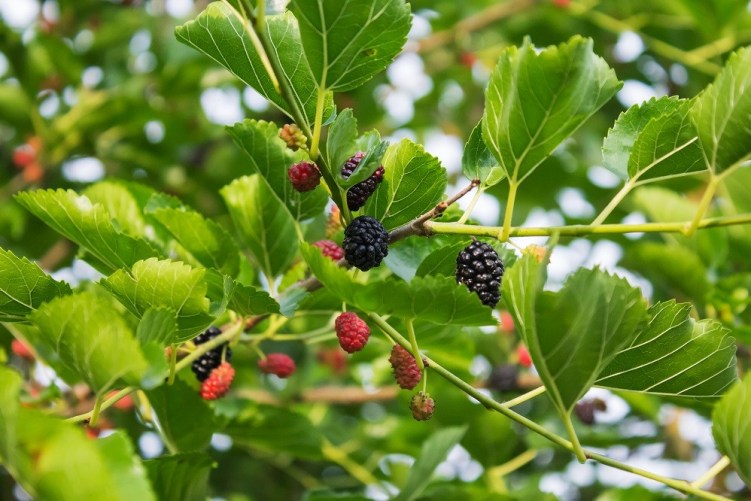本月最佳水果: 黑莓

Table of contents
来源
桑树是中等大小的落叶树,其果实可供人类食用。
在这一类型中 莫鲁斯 在葡萄牙,由于其大小和味道,最广泛种植的品种是黑莓( 黑毛丹 桑树(Mulberry),原产于东南亚,特别是现在的伊朗地区。 红豆杉 ),原产于美国东部,在我国很少栽培,而桑树(Mulberry)则是在美国东部。 白桑树 ),原产于远东,其叶子最常被用来喂蚕。
据说桑树是通过希腊传入欧洲的,在那里它们已经适应了,特别是在南方。 总的来说,它们的种植很古老,可以追溯到几千年前,主要是由于采摘树叶。
栽培和收获
桑树在葡萄牙生长良好,因为气候温和,日照时间长。 白桑树结出的果实味道不明显;黑莓和桑葚的果实味道更浓。 由于有雌雄同体和雌雄异体的标本,最好种植几棵树以确保你能得到果实,或者购买那些雌雄同体。
桑树很容易通过扦插繁殖,但从种子中通常可以获得更有活力和抗病性的标本。 桑树喜欢深厚和排水良好的土壤,但对干燥期的抵抗力很强,另一方面,它们对强风非常敏感,不喜欢过度潮湿。
See_also: 学习如何根除杂草

维护
桑树在树的休眠期需要修剪。 当叶子被采摘后,每年大约要修剪四次。 修剪是在早春和仲夏进行的,以去除枯枝、病枝或产量过高的枝条。 在非常干燥的时期,有必要进行灌溉,应在锅炉中进行灌溉,最好是滴水灌溉下降。
为了覆盖地面,使用松树皮,以避免出现杂草,因为杂草可能会损害桑树的发展,特别是在第一年。 可以用晒好的粪便或堆肥进行施肥。
虫害和疾病
影响桑树的主要害虫是鸟类,它们会吃掉大量的果实,还有鳞片和螨虫,它们会影响树的总体健康。 至于疾病,桑树对霉病、细菌性疾病和腐烂病非常敏感。 预防是最好的选择,所以要避免将它们放在过于潮湿和阳光不充足的地方。
属性和用途
桑树有许多用途。 在中国古代,它们的树皮被用来造纸。 桑树的叶子和其他桑树的叶子在较小的程度上被用来喂养蚕,而蚕只吃桑树的叶子,所以一年中要收获几次桑树叶。
至于水果,它含有丰富的维生素C和铁以及其他营养物质,通常是原味食用,但也可以以果酱、糖果、冰淇淋和其他制剂的形式食用。
See_also: 如何在花园里使用小苏打未成熟的果实对人类有中等程度的毒性,而且桑树是花粉的高生产者,不建议过敏体质的人食用。 果实在传统中药中被用来治疗感冒和糖尿病。


关于桑树的概况介绍 ( 桑树属 )
资料来源: 远东、中东和美国。
高度: 4至5米之间。
传播: 一般来说,扦插,播种也是如此。
栽种: 秋季和冬季,当他们落叶的时候。
土壤: 深层、排水良好的土壤,pH值在5.5和7之间。
气候: 葡萄牙的农村地区。
展览: 阳光或部分遮蔽。
收获: 春天和夏天。
维护: 修剪、除草、浇水,可能还要收集树叶。
照片:何塞-桑托斯

